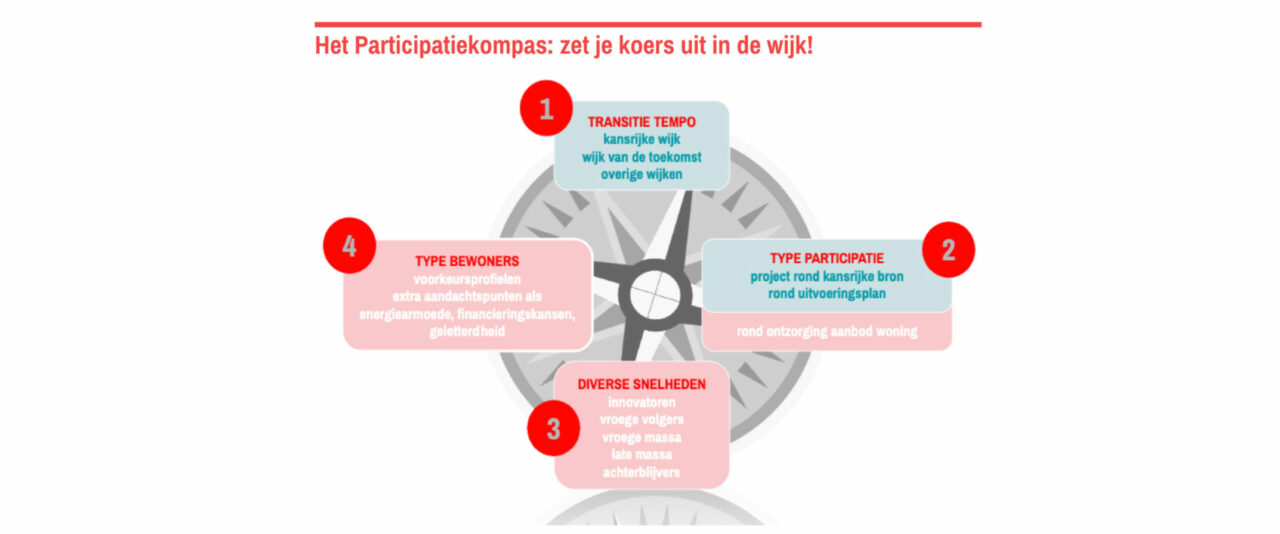
Energy transition Arnhem
The Participation Compass: chart your course in the neighbourhood!
The Municipality of Arnhem, like every other municipality in the Netherlands, is facing a major challenge: it wants to be climate-neutral by 2050. One of the themes in the ‘New energy made in Arnhem’ (NemiA) programme plan 2020-2030 is the built environment. Within this theme, the municipality is employing a district-oriented approach for saving energy, getting homes and buildings ready for the transition (insulation), and phasing out the use of gas in districts and neighbourhoods. The frameworks for this district-oriented approach were determined by the municipal council in the ‘Arnhem approach to the district-oriented energy transition’ (April 2019).
The inhabitants of Arnhem have starkly different views of the energy transition. Nevertheless, all these people, regardless of their attitude and position, will have to be involved in the energy transition. How do you get these residents on board? This is where STIPO entered the picture. Together with the Municipality of Arnhem, STIPO has converted the council framework for the ‘Arnhem approach to the district-oriented energy transition’ into a working method for collaborating with residents in the various districts of Arnhem on the energy transition.

Customised solutions
STIPO has developed the Participation Compass for this purpose. It’s an instrument that will fully validate this diversity and ensure that residents in all districts are given a customised solution in the energy transition. The Participation Compass has four coordinates that determine the participation approach and the use of specific tools for each district:
- The pace of transition: a distinction is made between three types of district: promising districts with the potential to accelerate based on a source; districts of the future; and the other districts that are already working to raise awareness, promote energy efficiency, insulate and introduce other no-regret measures.
- The type of participation required: project participation based on a promising source in the district; participation in the development of an implementation plan for a neighbourhood or (parts of a) district; and participation to secure the most suitable offer to make it easier for residents to phase out the use of gas in their homes (measuring, tenders, contractor, financing, temporary storage equipment, temporary housing, etc.).
- The different speed of adoption among residents: from innovators who take the lead, the masses who join once the offer is clear to those who join last, in line with Rogers’ innovation-adoption curve.
- The different types of preference among residents: critical innovators, city nomads, headstrong digitals, geographically attached residents, informed active families, established influencers, caring seniors and assertive doers, according to the Citisens model.
The Participation Compass has been adapted for use in all districts in Arnhem and translated into an action plan: work together with residents and make concrete participation recommendations that can be used in practice.
Navigating with a compass
The Participation Compass helps to unravel the tangle of diversity, timetables, objectives and scales, and it has provided a strategic working method for constantly separating the wheat from the chaff and determining a clear way forward.

